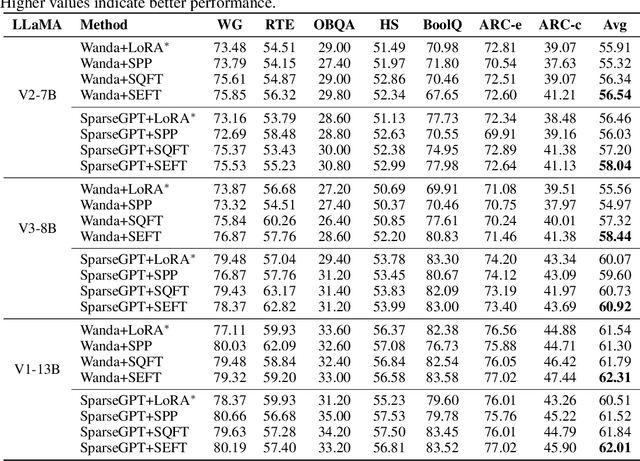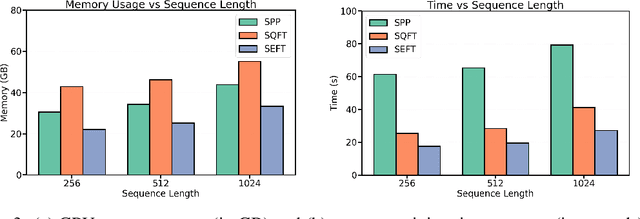Mykola Pechenizkiy
MuBench: Assessment of Multilingual Capabilities of Large Language Models Across 61 Languages
Jun 24, 2025Abstract:Multilingual large language models (LLMs) are advancing rapidly, with new models frequently claiming support for an increasing number of languages. However, existing evaluation datasets are limited and lack cross-lingual alignment, leaving assessments of multilingual capabilities fragmented in both language and skill coverage. To address this, we introduce MuBench, a benchmark covering 61 languages and evaluating a broad range of capabilities. We evaluate several state-of-the-art multilingual LLMs and find notable gaps between claimed and actual language coverage, particularly a persistent performance disparity between English and low-resource languages. Leveraging MuBench's alignment, we propose Multilingual Consistency (MLC) as a complementary metric to accuracy for analyzing performance bottlenecks and guiding model improvement. Finally, we pretrain a suite of 1.2B-parameter models on English and Chinese with 500B tokens, varying language ratios and parallel data proportions to investigate cross-lingual transfer dynamics.
MEAL: A Benchmark for Continual Multi-Agent Reinforcement Learning
Jun 17, 2025Abstract:Benchmarks play a crucial role in the development and analysis of reinforcement learning (RL) algorithms, with environment availability strongly impacting research. One particularly underexplored intersection is continual learning (CL) in cooperative multi-agent settings. To remedy this, we introduce MEAL (Multi-agent Environments for Adaptive Learning), the first benchmark tailored for continual multi-agent reinforcement learning (CMARL). Existing CL benchmarks run environments on the CPU, leading to computational bottlenecks and limiting the length of task sequences. MEAL leverages JAX for GPU acceleration, enabling continual learning across sequences of 100 tasks on a standard desktop PC in a few hours. We show that naively combining popular CL and MARL methods yields strong performance on simple environments, but fails to scale to more complex settings requiring sustained coordination and adaptation. Our ablation study identifies architectural and algorithmic features critical for CMARL on MEAL.
Task Adaptation from Skills: Information Geometry, Disentanglement, and New Objectives for Unsupervised Reinforcement Learning
Jun 12, 2025Abstract:Unsupervised reinforcement learning (URL) aims to learn general skills for unseen downstream tasks. Mutual Information Skill Learning (MISL) addresses URL by maximizing the mutual information between states and skills but lacks sufficient theoretical analysis, e.g., how well its learned skills can initialize a downstream task's policy. Our new theoretical analysis in this paper shows that the diversity and separability of learned skills are fundamentally critical to downstream task adaptation but MISL does not necessarily guarantee these properties. To complement MISL, we propose a novel disentanglement metric LSEPIN. Moreover, we build an information-geometric connection between LSEPIN and downstream task adaptation cost. For better geometric properties, we investigate a new strategy that replaces the KL divergence in information geometry with Wasserstein distance. We extend the geometric analysis to it, which leads to a novel skill-learning objective WSEP. It is theoretically justified to be helpful to downstream task adaptation and it is capable of discovering more initial policies for downstream tasks than MISL. We finally propose another Wasserstein distance-based algorithm PWSEP that can theoretically discover all optimal initial policies.
* Spotlight paper at ICLR 2024. This version includes acknowledgments omitted from the ICLR version and indicates the corresponding authors primarily responsible for the work
Leave it to the Specialist: Repair Sparse LLMs with Sparse Fine-Tuning via Sparsity Evolution
May 29, 2025



Abstract:Large language models (LLMs) have achieved remarkable success across various tasks but face deployment challenges due to their massive computational demands. While post-training pruning methods like SparseGPT and Wanda can effectively reduce the model size, but struggle to maintain model performance at high sparsity levels, limiting their utility for downstream tasks. Existing fine-tuning methods, such as full fine-tuning and LoRA, fail to preserve sparsity as they require updating the whole dense metrics, not well-suited for sparse LLMs. In this paper, we propose Sparsity Evolution Fine-Tuning (SEFT), a novel method designed specifically for sparse LLMs. SEFT dynamically evolves the sparse topology of pruned models during fine-tuning, while preserving the overall sparsity throughout the process. The strengths of SEFT lie in its ability to perform task-specific adaptation through a weight drop-and-grow strategy, enabling the pruned model to self-adapt its sparse connectivity pattern based on the target dataset. Furthermore, a sensitivity-driven pruning criterion is employed to ensure that the desired sparsity level is consistently maintained throughout fine-tuning. Our experiments on various LLMs, including LLaMA families, DeepSeek, and Mistral, across a diverse set of benchmarks demonstrate that SEFT achieves stronger performance while offering superior memory and time efficiency compared to existing baselines. Our code is publicly available at: https://github.com/QiaoXiao7282/SEFT.
NeuroTrails: Training with Dynamic Sparse Heads as the Key to Effective Ensembling
May 23, 2025Abstract:Model ensembles have long been a cornerstone for improving generalization and robustness in deep learning. However, their effectiveness often comes at the cost of substantial computational overhead. To address this issue, state-of-the-art methods aim to replicate ensemble-class performance without requiring multiple independently trained networks. Unfortunately, these algorithms often still demand considerable compute at inference. In response to these limitations, we introduce $\textbf{NeuroTrails}$, a sparse multi-head architecture with dynamically evolving topology. This unexplored model-agnostic training paradigm improves ensemble performance while reducing the required resources. We analyze the underlying reason for its effectiveness and observe that the various neural trails induced by dynamic sparsity attain a $\textit{Goldilocks zone}$ of prediction diversity. NeuroTrails displays efficacy with convolutional and transformer-based architectures on computer vision and language tasks. Experiments on ResNet-50/ImageNet, LLaMA-350M/C4, among many others, demonstrate increased accuracy and stronger robustness in zero-shot generalization, while requiring significantly fewer parameters.
REOBench: Benchmarking Robustness of Earth Observation Foundation Models
May 22, 2025Abstract:Earth observation foundation models have shown strong generalization across multiple Earth observation tasks, but their robustness under real-world perturbations remains underexplored. To bridge this gap, we introduce REOBench, the first comprehensive benchmark for evaluating the robustness of Earth observation foundation models across six tasks and twelve types of image corruptions, including both appearance-based and geometric perturbations. To ensure realistic and fine-grained evaluation, our benchmark focuses on high-resolution optical remote sensing images, which are widely used in critical applications such as urban planning and disaster response. We conduct a systematic evaluation of a broad range of models trained using masked image modeling, contrastive learning, and vision-language pre-training paradigms. Our results reveal that (1) existing Earth observation foundation models experience significant performance degradation when exposed to input corruptions. (2) The severity of degradation varies across tasks, model architectures, backbone sizes, and types of corruption, with performance drop varying from less than 1% to over 20%. (3) Vision-language models show enhanced robustness, particularly in multimodal tasks. REOBench underscores the vulnerability of current Earth observation foundation models to real-world corruptions and provides actionable insights for developing more robust and reliable models.
HASARD: A Benchmark for Vision-Based Safe Reinforcement Learning in Embodied Agents
Mar 11, 2025Abstract:Advancing safe autonomous systems through reinforcement learning (RL) requires robust benchmarks to evaluate performance, analyze methods, and assess agent competencies. Humans primarily rely on embodied visual perception to safely navigate and interact with their surroundings, making it a valuable capability for RL agents. However, existing vision-based 3D benchmarks only consider simple navigation tasks. To address this shortcoming, we introduce \textbf{HASARD}, a suite of diverse and complex tasks to $\textbf{HA}$rness $\textbf{SA}$fe $\textbf{R}$L with $\textbf{D}$oom, requiring strategic decision-making, comprehending spatial relationships, and predicting the short-term future. HASARD features three difficulty levels and two action spaces. An empirical evaluation of popular baseline methods demonstrates the benchmark's complexity, unique challenges, and reward-cost trade-offs. Visualizing agent navigation during training with top-down heatmaps provides insight into a method's learning process. Incrementally training across difficulty levels offers an implicit learning curriculum. HASARD is the first safe RL benchmark to exclusively target egocentric vision-based learning, offering a cost-effective and insightful way to explore the potential and boundaries of current and future safe RL methods. The environments and baseline implementations are open-sourced at https://sites.google.com/view/hasard-bench/.
Distill Not Only Data but Also Rewards: Can Smaller Language Models Surpass Larger Ones?
Feb 26, 2025Abstract:Distilling large language models (LLMs) typically involves transferring the teacher model's responses through supervised fine-tuning (SFT). However, this approach neglects the potential to distill both data (output content) and reward signals (quality evaluations). Extracting reliable reward signals directly from teacher models is challenging, as LLMs are optimized for generation rather than evaluation, often resulting in biased or inconsistent assessments. To address this limitation, we propose a novel distillation pipeline that transfers both responses and rewards. Our method generates pseudo-rewards through a self-supervised mechanism that leverages the inherent structure of both teacher and student responses, enabling reward learning without explicit external evaluation. The reward model subsequently guides reinforcement learning (RL), allowing iterative refinement of the student model after an SFT warm-up phase. Experiments on GSM8K and MMLU-PRO demonstrate that our method consistently outperforms traditional SFT-based approaches, enabling student models to surpass the performance of their teachers. This work highlights the potential for scalable, efficient distillation through structured self-supervised reward learning, reducing dependence on external reward supervision.
On Adversarial Robustness of Language Models in Transfer Learning
Dec 29, 2024



Abstract:We investigate the adversarial robustness of LLMs in transfer learning scenarios. Through comprehensive experiments on multiple datasets (MBIB Hate Speech, MBIB Political Bias, MBIB Gender Bias) and various model architectures (BERT, RoBERTa, GPT-2, Gemma, Phi), we reveal that transfer learning, while improving standard performance metrics, often leads to increased vulnerability to adversarial attacks. Our findings demonstrate that larger models exhibit greater resilience to this phenomenon, suggesting a complex interplay between model size, architecture, and adaptation methods. Our work highlights the crucial need for considering adversarial robustness in transfer learning scenarios and provides insights into maintaining model security without compromising performance. These findings have significant implications for the development and deployment of LLMs in real-world applications where both performance and robustness are paramount.
Everyone deserves their voice to be heard: Analyzing Predictive Gender Bias in ASR Models Applied to Dutch Speech Data
Nov 14, 2024


Abstract:Recent research has shown that state-of-the-art (SotA) Automatic Speech Recognition (ASR) systems, such as Whisper, often exhibit predictive biases that disproportionately affect various demographic groups. This study focuses on identifying the performance disparities of Whisper models on Dutch speech data from the Common Voice dataset and the Dutch National Public Broadcasting organisation. We analyzed the word error rate, character error rate and a BERT-based semantic similarity across gender groups. We used the moral framework of Weerts et al. (2022) to assess quality of service harms and fairness, and to provide a nuanced discussion on the implications of these biases, particularly for automatic subtitling. Our findings reveal substantial disparities in word error rate (WER) among gender groups across all model sizes, with bias identified through statistical testing.
 Add to Chrome
Add to Chrome Add to Firefox
Add to Firefox Add to Edge
Add to Edge